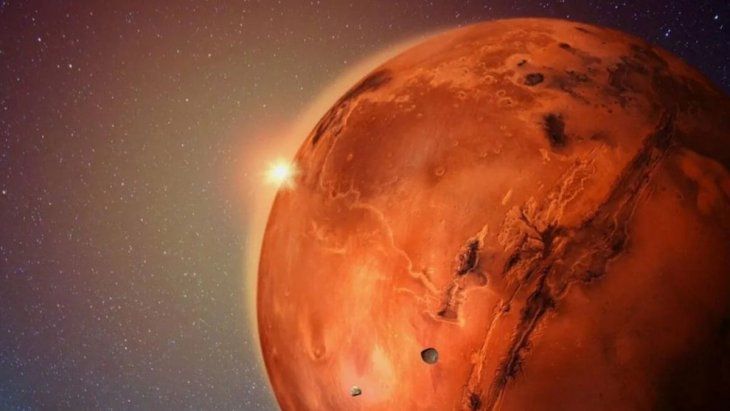The image was captured by the ExoMars mission’s Trace Gas Orbiter. The phenomenon was formed by ancient salt chloride deposits found around craters on the Martian surface.
The image was captured by the ExoMars mission’s Trace Gas Orbiter.
Courtesy of Instagram @europeanspaceagency
The enigma about the existence of life beyond Earth It is one of the great questions of humanity, and Mars has always been a key point in speculation. A new discovery made by the European Space Agency (ESA) has revived these discussions, identify a “smiley face” on the surface of the red planet.
The content you want to access is exclusive for subscribers.
ESA unveiled the Image of a formation resembling a “smiley face”which has generated great interest among experts, as some believe it could be an indication that There was once life on MarsThe image was captured by the ExoMars mission’s Trace Gas Orbiter, and is made up of ancient salt chloride deposits found around craters on the Martian surface.


The discovery was shared in the ESA Instagram accountwhere they explained that, although Mars is an arid planet today, Billions of years ago it was a world full of rivers, lakes and even oceansAccording to experts, these salt deposits could be the remains of ancient bodies of water, suggesting that the planet may have had habitable areas in its past.
mars-planet.jpg

The phenomenon was formed by ancient salt chloride deposits found around craters on the Martian surface.
The past of Mars
This recent discovery is part of a study carried out in August, in which They mapped nearly 1,000 salt deposits on Mars. Although the size of the “smiley face” has not yet been precisely determined, it is estimated that these structures have diameters varying between 300 and 3,000 meters, According to Scientific Data magazine, scientists believe that these formations could offer valuable Clues to the conditions that favored biological activity and the preservation of possible traces of life in the planet’s pastmaking them a focus of future research.
ESA planetary scientist Valentin Bickel highlighted that These salt deposits are essential to understanding Mars’ watery pastsince they are closely related to the presence of water. Although Mars is currently extremely drywas once covered by flowing water. These deposits can indicate when certain areas of the planet were last submerged, providing crucial data for studying water distribution and the potential for habitability on early Mars.
Bickel added that these deposits probably formed when small masses of water or brine evaporated under the Martian sunin a process similar to the one we use on Earth to obtain salt from saltwater pools. Although the discovery has important scientific implications, ESA did not miss the opportunity to add a note of humour: “Sometimes, it seems that the salt deposits on Mars bring a smile back to your face,” they commented in a playful tone.
More discoveries about water on Mars
In a recent post, ESA also shared New data on water loss on Mars, accompanied by images captured by the Hubble telescope. “Scientists have discovered that the water leak on Mars is related to its distance from the Sun. As the planet approaches, hydrogen and deuterium (heavy hydrogen) escape more rapidly, transforming our understanding of water on Mars. These Hubble images show the planet at its furthest (aphelion) and closest (perihelion) positions from the Sun, with the atmosphere expanding noticeably at perihelion. It’s fascinating! they posted on social media.
Source: Ambito
I am an author and journalist who has worked in the entertainment industry for over a decade. I currently work as a news editor at a major news website, and my focus is on covering the latest trends in entertainment. I also write occasional pieces for other outlets, and have authored two books about the entertainment industry.




